Header Image from Visit NH.gov, Merrimack Valley/Currier & Ives Scenic Byway
New Hampshire was admitted: June 21, 1788 as the 9th state.
Bird: Purple finch
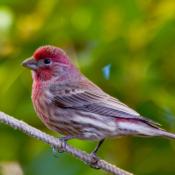 The Purple Finch is a medium-sized finch, having a length of 5-6 inches and weighing a little over half an ounce to an ounce. A group of finches has many collective nouns, including a “charm”, “company”, and “trembling” of finches.
The Purple Finch is a medium-sized finch, having a length of 5-6 inches and weighing a little over half an ounce to an ounce. A group of finches has many collective nouns, including a “charm”, “company”, and “trembling” of finches.
The male Purple Finch has more of a raspberry coloring than purple on its upper body while its underbelly is white.
The female Purple Finch, far less colorful than the male, has brown and white stripes throughout its body. The female’s appearance is very suited for the camouflaging needed in sitting on a nest of eggs.
These birds prefer to be solitary or stay in pairs during the nesting season, but they can be gregarious in the winter and will gather in larger flocks, often mixing with other finches or pine siskins.
Flower: Purple lilac White lilacs symbolize purity and innocence. Violet lilacs symbolize spirituality. Blue lilacs symbolize happiness and tranquility. Magenta lilacs symbolize love and passion. Lilac, the color for which this flower is named, is a light purple that symbolizes a first love. the purple lilac was chosen as the state flower of New Hampshire because it symbolizes the hardy character of the men and women of the Granite State.
White lilacs symbolize purity and innocence. Violet lilacs symbolize spirituality. Blue lilacs symbolize happiness and tranquility. Magenta lilacs symbolize love and passion. Lilac, the color for which this flower is named, is a light purple that symbolizes a first love. the purple lilac was chosen as the state flower of New Hampshire because it symbolizes the hardy character of the men and women of the Granite State.
A lilac bush can live for hundreds of years. There are over 1,000 varieties of lilacs in several colors including white and pink. Originally from Europe and Asia, lilacs date back to the 1750’s in America – they were planted in our first botanical gardens and both George Washington and Thomas Jefferson grew lilacs in their gardens. New York recognizes lilac as the official state bush.
Tree: White birch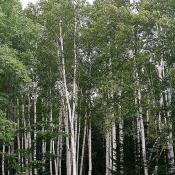 American White Birch – aka paper birch or canoe birch. While paper birch does not have a very high overall economic value, it is used in furniture, flooring, popsicle sticks. The wood can also be made into spears, bows, arrows, snowshoes, sleds and other items. Its bark is an excellent fire starter; it ignites at high temperatures even when wet.
American White Birch – aka paper birch or canoe birch. While paper birch does not have a very high overall economic value, it is used in furniture, flooring, popsicle sticks. The wood can also be made into spears, bows, arrows, snowshoes, sleds and other items. Its bark is an excellent fire starter; it ignites at high temperatures even when wet.
It is the provincial tree of Saskatchewan and the state tree of New Hampshire
State Quarter
From theus50.com
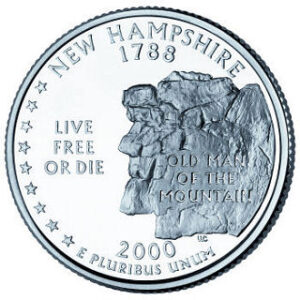
The New Hampshire quarter honors one of the state’s most unique natural attractions, “The Old Man of the Mountain.” The state motto, “Live free or die,” and nine stars, signifying the fact that New Hampshire was the ninth state to ratify the Constitution, complete the design.
“The Old Man of the Mountain” was a distinctive rock formation on Mt. Cannon in the Franconia Notch gateway to northern New Hampshire. From the right view, this unique rock formation, comprised of five layers of Conway red granite — depicted the distinct profile of an elderly man gazing eastward. Geographers believe that the layers of granite were formed by the melting and slipping away action of an ice sheet that covered the Franconia Mountains at the end of the glacial period 2,000 to 10,000 years ago. Until it crumbled in early 2003, the formation measured over 40 feet high with a lateral distance of 25 feet.
Capital: Concord, New Hampshire. The first capital city of New Hampshire was in Exeter.
Nickname: Granite State
Motto: Live free or die. The motto comes from a statement written by the Revolutionary General John Stark, hero of the Battle of Bennington. The state’s license plates—bearing the slogan “Live Free or Die”—are made by prison inmates.
New Hampshire Facts and Trivia
New Hampshire was named after the town of Hampshire, England.
One of the first Europeans to visit the region was English explorer Martin Pring in 1603. Other explorers followed including Captain John Smith and French explorer Samuel de Champlain. England claimed the land after John Smith’s visit and soon began to colonize the area.
The first English settlement was a small fishing outpost near present day Rye in 1623. That same year, another settlement was established called Hilton’s Point. It would later become the city of Dover.
Over the next several years, more colonists came. The living was tough, but with help from the local natives they learned to survive. The colony became known for its lumber and tall trees that were good for shipbuilding. Portsmouth became a wealthy port and shipbuilding location.
In 1679, New Hampshire was officially named a province of England. It would remain under the government of Massachusetts until 1741, when it became a separate colony.
The first potato planted in the United States was at Londonderry Common Field in 1719.
In 1764, the boundary between Massachusetts and New Hampshire was established at the Connecticut River.
In December of 1774, one of the first engagements of the Revolutionary War occurred when colonists from New Hampshire captured Fort William and Mary. They took the fort without firing a shot and captured much needed guns, cannon, and ammunition for the upcoming war.
In January 1776, it became the first of the British North American colonies to to declare its independence from the Kingdom of Great Britain’s authority, and it was the first to establish its own state constitution.
As leaders in the revolutionary cause, New Hampshire delegates received the honor of being the first to vote for the Declaration of Independence on July 4, 1776.
New Hampshire’s present constitution was adopted in 1784; it is the second oldest in the country.
After the Revolutionary War, New Hampshire joined the newly formed United States. On June 21, 1788 it became the ninth state to ratify the Constitution.
Concord is made the permanent capital in 1808.
In 1833 the first free public library in the United States was established in Peterborough.
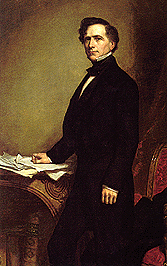 1852 – Franklin Pierce became the 14th President of the United States, the only one from New Hampshire. He was a hero of the war with Mexico and the youngest President elected at that time.
1852 – Franklin Pierce became the 14th President of the United States, the only one from New Hampshire. He was a hero of the war with Mexico and the youngest President elected at that time.
The very first motorized ascent of the Mount Washington auto road was by Feelan O. Stanley, of Stanley Steamer fame, in 1899.
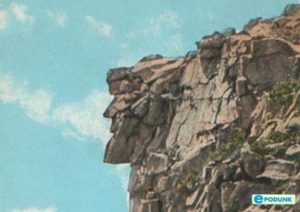 1945 – The Old Man of the Mountain was made the official state emblem. It collapsed in 2003. The granite profile is one of the most famous natural landmarks in the state. The Old Man’s head measures 40 feet from chin to forehead and is made up of five ledges. Nature carved this profile thousands of years ago. The natural sculpture is 1,200 feet above Echo Lake.
1945 – The Old Man of the Mountain was made the official state emblem. It collapsed in 2003. The granite profile is one of the most famous natural landmarks in the state. The Old Man’s head measures 40 feet from chin to forehead and is made up of five ledges. Nature carved this profile thousands of years ago. The natural sculpture is 1,200 feet above Echo Lake.
America’s Stonehenge is a 4000 year old megalithic (stone constructed) site located on Mystery Hill in Salem and presently serves as a leisurely, educational tour for the whole family.
The Pierce Manse in Concord is the home of the only New Hampshire citizen ever elected President.
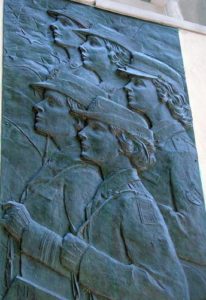 The Memorial Bell Tower at Cathedral of the Pines in Rindge has four bronze bas-reliefs designed by Norman Rockwell. The bell tower is specifically dedicated to women — military and civilian — who died serving their country.
The Memorial Bell Tower at Cathedral of the Pines in Rindge has four bronze bas-reliefs designed by Norman Rockwell. The bell tower is specifically dedicated to women — military and civilian — who died serving their country.
The Bavarian-style hamlet of Merrimack is home to the famous eight-horse hitch, and the Clydesdales maintained by the Anheuser-Busch Brewery.
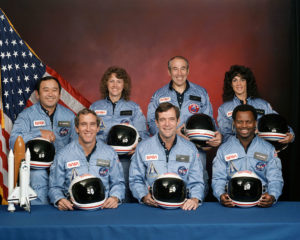 The Christa McAuliffe Planetarium in Concord is a state-of-the art planetarium dedicated to the memory of New Hampshire teacher Christa McAuliffe, who died in the explosion of the space shuttle Challenger in 1986.
The Christa McAuliffe Planetarium in Concord is a state-of-the art planetarium dedicated to the memory of New Hampshire teacher Christa McAuliffe, who died in the explosion of the space shuttle Challenger in 1986.
It takes approximately 40 gallons of sap to make approximately 1 gallon of maple syrup. Each year, the New Hampshire maple industry produces close to 90,000 gallons of maple syrup.
New Hampshire is internationally known for the New Hampshire primary, the first primary in the quadrennial American presidential election cycle. State law requires that the Secretary of State schedule this election at least one week before any “similar event”. However, the Iowa caucus has preceded the New Hampshire primary. This primary, as the nation’s first contest that uses the same procedure as the general election, draws more attention than those in other states, and it has been decisive in shaping the national contest.
State law permits a town with fewer than 100 residents to open its polls at midnight, and close when all registered citizens have cast their ballots. As such, the communities of Dixville Notch in Coos County and Hart’s Location in Carroll County, among others, have chosen to implement these provisions. Dixville Notch and Hart’s Location are traditionally the first places in both New Hampshire and the U.S. to vote in presidential primaries and elections.
In the past, New Hampshire has often voted Republican. Between 1856 and 1988, New Hampshire cast its electoral votes for the Democratic presidential ticket six times: Woodrow Wilson (twice), Franklin D. Roosevelt (three times), and Lyndon B. Johnson (once).
Beginning in 1992, New Hampshire became a swing state in both national and local elections. The state supported Democrats Bill Clinton in 1992 and 1996, John Kerry in 2004, Barack Obama in 2008 and 2012, and Hillary Clinton in 2016. It was the only state in the country to switch from supporting Republican George W. Bush in the 2000 election to supporting his Democratic challenger in the 2004 election, when John Kerry, a senator from neighboring Massachusetts, won the state. Donald Trump very narrowly lost the state in 2016.
Fun fact: When referring to something of low quality in New Hampshire, the correct term is “janky.”
The name of the town of Milan, New Hampshire is not pronounced like the Milan in Italy. Don’t even think about saying, “Mih-LAHN”. The Milan in New Hampshire is pronounced MY-linn.
Strange Laws
It is illegal to pick up seaweed off the beach at night.
“No person, while hunting or obviously on his way to or from hunting may have a ferret in his possession, custody or control.”
A 1971 law regulates the opening in sugar shakers in restaurants. It must be less than 3/8 of an inch.
You cannot sell the clothes you are wearing to pay a gambling debt.
It is illegal to show a movie before 2 p.m.
People
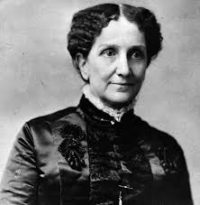 Mary Morse Baker Eddy, founder, religious leader, founder of Christian Science
Mary Morse Baker Eddy, founder, religious leader, founder of Christian Science- Horace Greeley, journalist, politician
 Carleton Fisk, baseball player, Hall of Fame
Carleton Fisk, baseball player, Hall of Fame- Sarah Josepha Hale, author and journalist who wrote the poem “Mary Had a Little Lamb” in 1830 is from Newport, New Hampshire.
- Levi Hutchins of Concord invented the first alarm clock in 1787.
- John Irving, writer
- Luther C. Ladd, the first enlisted soldier to lose his life in the Civil War.
 Franklin Pierce, U.S. president
Franklin Pierce, U.S. president- Augustus Saint-Gaudens from Cornish was the first sculptor to design an American coin. His commission became fraught with difficulties related to Saint-Gaudens’ desire for high relief relative to the demands of mass production and use.
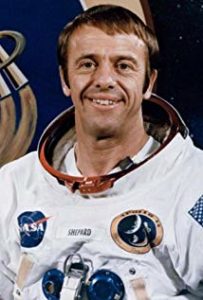 Alan Shepard, astronaut, the first American to travel in space
Alan Shepard, astronaut, the first American to travel in space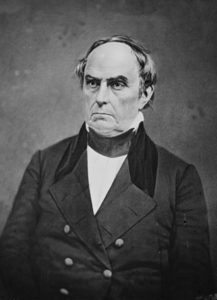 Daniel Webster, statesman
Daniel Webster, statesman
Credits:
See 50 states.com
See ducksters.com
See wikipedia.org
See Only in Your State.com
See rd.com
